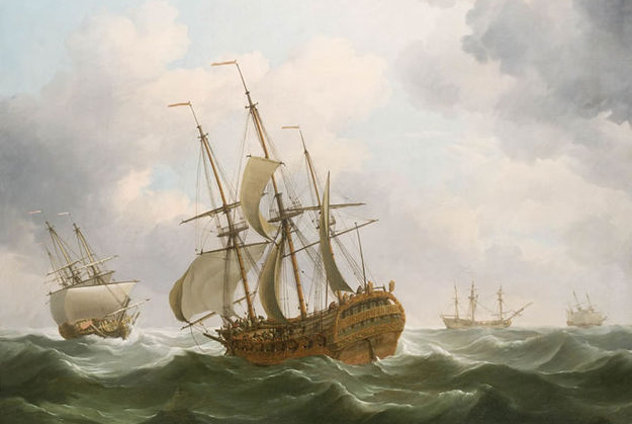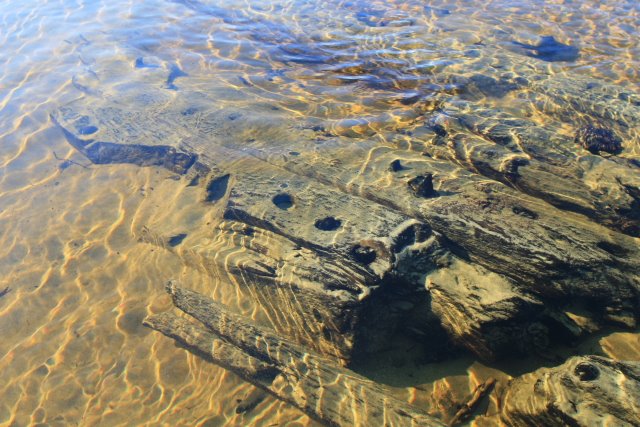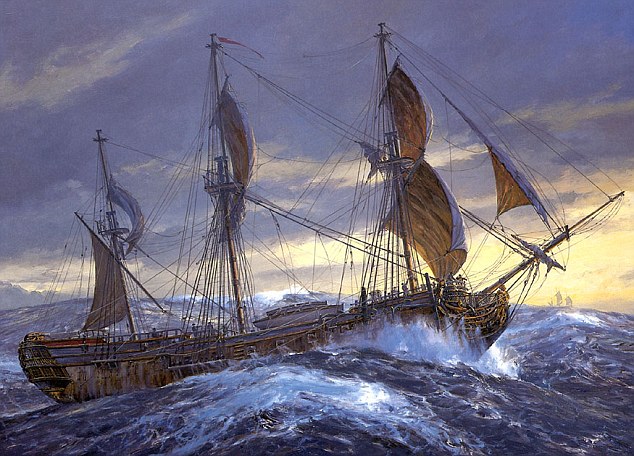
After sailors in His Majesty’s Royal Navy became shipwrecked on the coast of South America, they lost all sense of order. The crew was able to find land and set up camps in separate areas, ignoring their captain now that they were no longer on their ship. But some of the men were blind with malnutrition, while others roamed the island trying to find a way off of it.
The only time they came back to the ship was to gather food supplies. However, that proved to be more difficult than they thought, due to the fact that their captain was having the supplies guarded. After the crew found out that the captain wasn’t going to share the rest of the food supplies, they attempted to blow him up by laying a trail of gunpowder to his tent. Luckily, the captain discovered the plan just in time.
Just weeks after they were marooned on the island, the men had turned into mutineers and cannibals. They first started off eating the corpses that washed up on shore from the wreck. They even ate some of the men who they had buried. One of the crew members told the story of how the cabin boy was found eating the liver of a dead shipmate.
Captain David Cheap was in command of the HMS Wager, but he showed how ill-equipped he was after the ship went down. It didn’t help that he was insecure and hot-tempered, resulting in his feelings taking control of the situation and making it even worse than it was. He went as far as punishing those who didn’t listen – whipping the men who were caught stealing and then refusing to dress their wounds, which resulted in their deaths.
While Cheap thought toughness would control his crew, it only alienated them more, leaving every man to fend for themselves. Nearly three weeks after the wreck, Cheap had intervened between a drunken midshipman, Henry Cozens, and the ship’s purser. Cheap ended up firing his pistol at Cozens, though he missed the first time. Cheap shot at Cozens again and hit him in the cheek. To make the relationship between captain and his crew worse, Cheap refused to allow the surgeon to tend to Cozens, leaving him to die from his injury. This added yet another corpse to the number of dead who began to litter the island.
Many people do not know the horrendous story of the HMS Wager in 1741; instead they remember the Bounty nearly half a century after the HMS Wager disaster. While the Wager experience is a nasty story about men trying to survive, it reveals the truth about how people react in a dangerous situation. Those men ate each other and killed each other trying to survive, and were eventually driven mad by each other.
For those who survived, their stories became best sellers as the public enjoyed their grisly tales. A naval historian, Rear Admiral C.H. Layman, used those stories and paired them together with a letter written by Captain Cheap. He wanted to pair the two together in order to reveal just how poor the leadership was on Cheap’s part and how an abundance of alcohol-fueled the terrible outcome.
Many historians believe that the HMS Wager’s voyage was doomed from the start. It was one of six ships that set off to harass the Spanish, England’s wartime enemy. They were heading toward South America to capture enemy ships.
The ship was originally was a store ship and had been converted to a fighting ship. It was coupled with 28 guns and a crew of 160 men. Not only was the ship carrying weapons, but also a deadly amount of alcohol to be distributed among the other ships.
Due to the fact that recruitment for crew members was low, the ship was manned by old men and cripples. Some of the men shouldn’t have been helping on the boat in the first place. The first captain had been ill and died, leaving Cheap in charge.
Before setting sail, there were issues in the dockyard, making the HMS Wager late in setting out. This resulted in the ship having to sail through Cape Horn, where the seas were always rough. One of the masts snapped off and the ship was separated from the rest. Shortly after that happened, Cheap fell down a hatchway and broke his collarbone. The surgeon then gave him opiates, making him heavily sedated when the ship hit the storm.
The ship struck rocks at 4:30 am on May 14, 1741. The men below decks drowned, leaving the rest of the crew to attempt to right the ship; however, a majority of them panicked. After the ship struck the rocks and became stranded, some sailors rowed to shore while others opened the wine and brandy on the ship. They stole clothes from the officers’ cabins and had drunken brawls for several days.

Cheap had had enough of the brawls; he brought the men to shore and knocked the boatswain unconscious. When they were brought to land, the men found out there was no shelter and that they were the only ones on the island. All there was to eat was celery.
By the end of June that year, 40 men had died on the island out of the 140 that had survived the wreck. John Byron, a 16-year-old who wrote about his experience on the island, had actually tamed a dog, but the shipmates ended up killing it for food. Weeks later, Byron found the dog’s rotting paws and ended up eating them raw, as he was starving. At one point indigenous people came to the island in canoes and shared their shellfish and meat with the men. However, the crewmen were so barbaric, they took advantage of the indigenous women, and their rescuers left.
Plans were brought forward for getting off the island, but Cheap decided against all of them. Therefore, on October 1741, the men used Cozen’s murder as an excuse to arrest Cheap and tie him up in his tent. Several men then took off in the ship’s longboat and two other small boats. Cheap, the surgeon, and one lieutenant were left behind on the island. The men were then joined by Byron and seven other men who had changed their minds about the escape.
In the two small boats, John Bulkeley and 72 men had only 12 days’ worth of food left. They survived on a small handful of flour each day, growing tired and sick. Eleven men had asked to be put on a jungle coast and never were seen again. The remaining men became delirious with hunger. One teenager died, and then a 12-year-old began to fade. The boy asked to buy food from the men, but they refused him.
On the Atlantic coast by South America, the men managed to swim to an island and kill some game. Once the food was on the boats, the men in the boats abandoned eight men on the island. The men who were in the boat made it to Rio Grande, but were eventually taken prisoner by the Spanish.
Only 30 men survived the voyage. In 1743, Bulkeley arrived in England and wrote stories about his survival. He, however, stretched the truth on several accounts, such as the one about being the leader. He most likely stretched the truth because the men were dead and not able to prove him wrong.
Surprisingly, the men that were left on the island were still alive. They ate seaweed and their shoes to survive. After many months being on the island, Cheap and the other men retrieved boats from the wreck. One of them sank, however, and the men swam back to shore.

Like the cruel man he was, Cheap ended up eating his hoard of food in front of his dying crew members. Six men ended up leaving the island, but were never heard of again. The five left onshore were taken by some indigenous people in their canoes, making the Englishmen row the boats. The boy sailor ended up dying on this voyage. The surgeon died of exhaustion on their way to Chile. Cheap and Byron, along with a few other men, had made it to Santiago and from there they were put on a ship to England.
Byron’s family had believed he was dead, since he had been gone for five years. Some of the crew members Bulkeley abandoned on the island had also made it back to England. The rest of the surviving sailors had been captured and sold as prisoners to the Spanish. The men were enslaved for several years on Spanish warships; they were eventually released and made their way back to England.
It proved troublesome for Bulkeley that these men were able to return to England; the public was not sure whose story was true. Eventually each man went his own way, some returning to sea and others being promoted.
